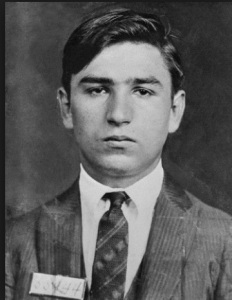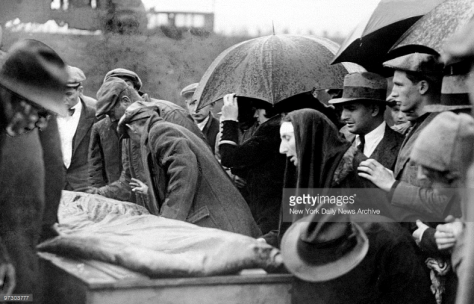
Mount Judah Cemetery is one of several Jewish burial grounds clustered along the Brooklyn-Queens borderline. Located just off the Jackie Robinson Parkway, the 37-acre cemetery is divided into two sections that straddle Cypress Avenue in Ridgewood, Queens. It was incorporated as Highland View Cemetery Corporation in 1908 and the first burial took place there in 1912. Among the 54,000 individuals buried at Mount Judah are two young men who represent the range of human experience—they led very different lives that, sadly, each ended in violence and turmoil.

In the early 1920s, there were two gangs fighting for domination over the Jewish Lower East Side, one led by Jacob “Little Augie” Orgen and the other by Nathan “Kid Dropper” Kaplan. Their feud was considered one of the bloodiest New York City had known at that time, resulting in at least 20 killings and concluding with Kaplan’s murder in 1923. With Kaplan’s death, Orgen, at just 21 years old, became one of the city’s major labor racketeers and bootleggers.
The sole black sheep in a respectable immigrant family, Orgen’s criminal career began in 1917 as a knife fighter and, later, gunman, for gangster Benjamin Fine. Orgen was arrested 14 times and served four terms in prison over the next decade. On October 15, 1927, three gunmen shot and killed Orgen, and wounded his bodyguard Jack “Legs” Diamond, in a barrage of gunfire near the corner of Delancey and Norfolk streets on the Lower East Side. Over 1,500 people gathered the next day for his funeral, including his grieving family, mob associates who had come to play their last respects, and police detectives looking for his killers (no one was ever convicted of the crime). His grave is in the Krashnosheltz society’s section at Mount Judah, and his mother and father lie nearby.



Just across from the Krashnosheltz society’s gate at Mount Judah is the B’nai Wolf Goodman Family plot, which includes the graves of Andrew Goodman and his parents. Goodman was from an intellectually and socially progressive family who lived on Manhattan’s Upper West Side. During the summer of 1964, when he was a 20-year-old anthropology student at Queens College, Goodman volunteered for the Freedom Summer project, a campaign to register black voters in the Deep South.
On Goodman’s first day in Mississippi, he and two other civil rights workers, James Chaney and Michael Schwerner, disappeared when they went to investigate the burning of Mount Zion Church in Philadelphia, Miss. Their bodies were found six weeks later in a nearby earthen dam. They had been abducted, shot, and killed by members of the Ku Klux Klan. The national outrage in response to their deaths helped bring about the passage of the Voting Rights Act of 1965. In 1966, Goodman’s parents created the Andrew Goodman Foundation to encourage social action. James Chaney, Andrew Goodman, and Michael Schwerner were posthumously awarded the Presidential Medal of Freedom in 2014.


Sources: Mount Judah Cemetery; “‘Little Augie’ Slain by Rival Gangsters,” New York Times Oct. 16, 1927; “Funeral of ‘Little Augie’…,” Brooklyn Daily Eagle Oct. 17, 1927; “Gangland Pays Last Tribute to Little Augie,” New York Herald Tribune Oct. 18, 1927; The Rise and Fall of the Jewish Gangster in America (A. Fried, 1993); “Slain Rights Workers Mourned by Thousands at Services Here,” New York Times Aug. 10, 1964; “Three Who Mattered,” New York Daily News, June 21, 2014; Andrew Goodman Foundation.
